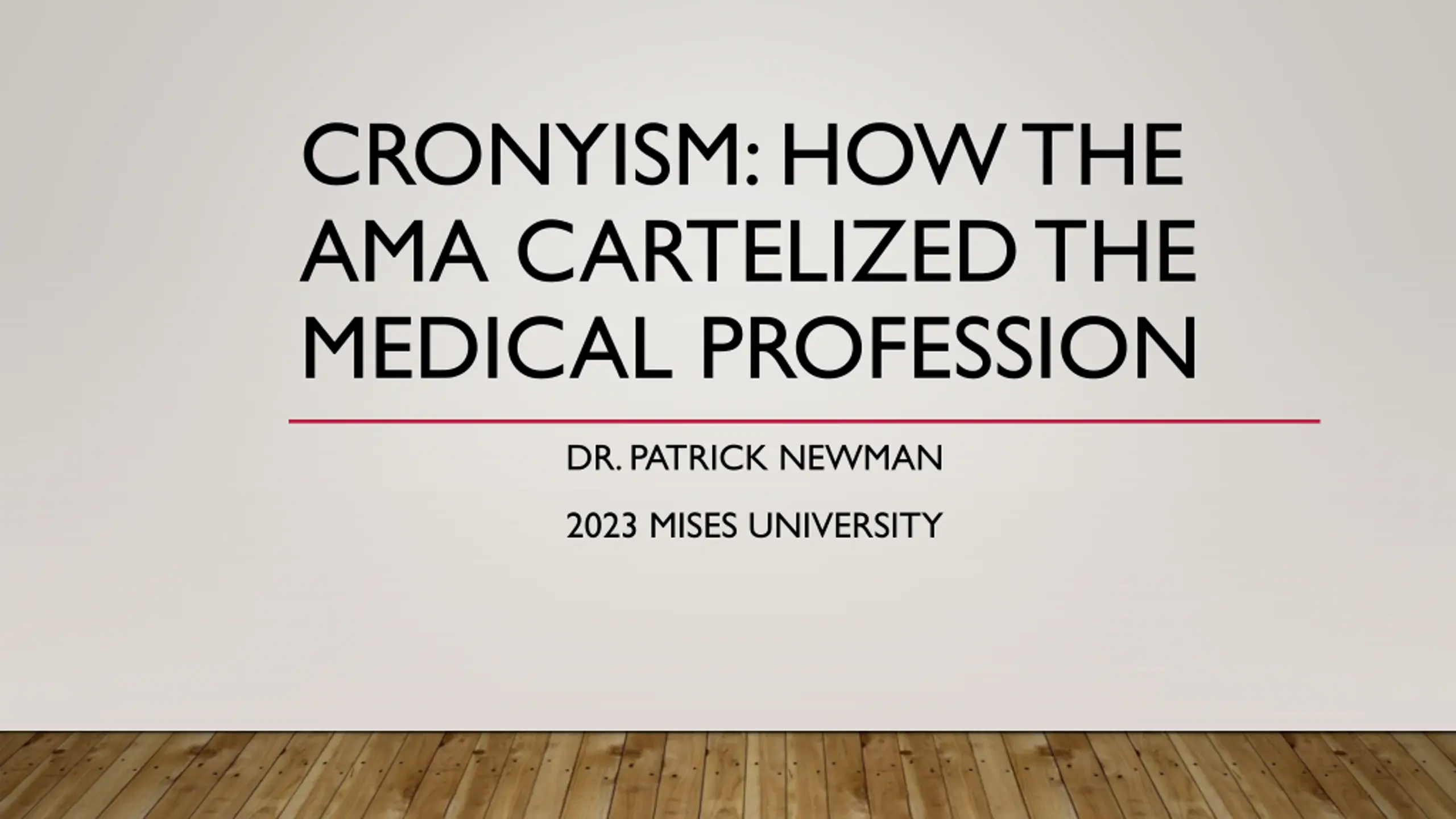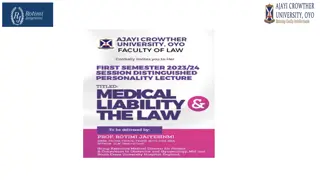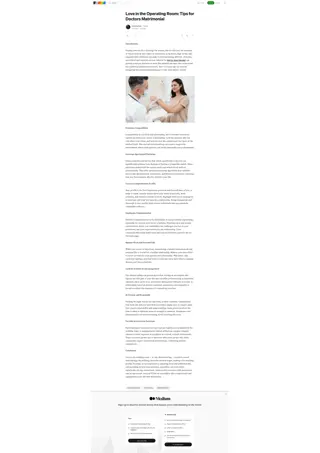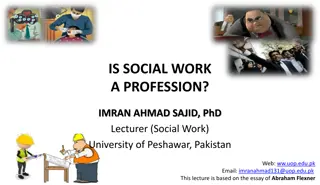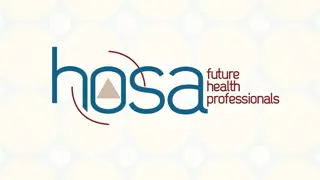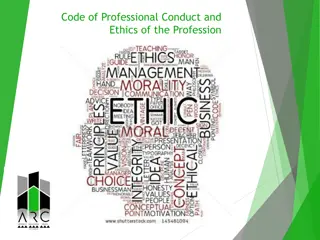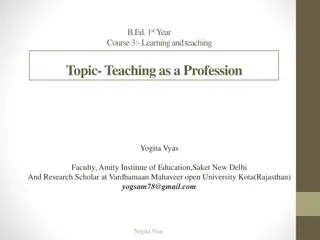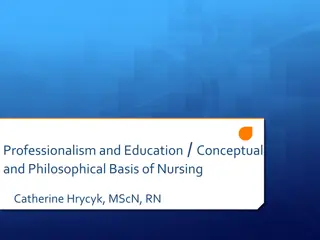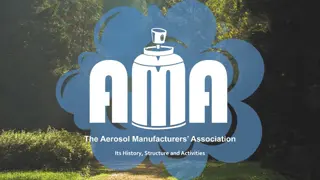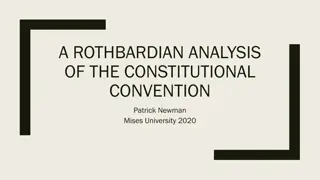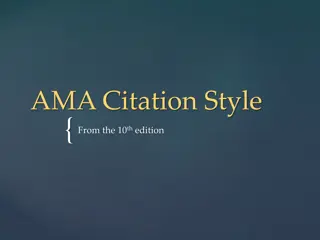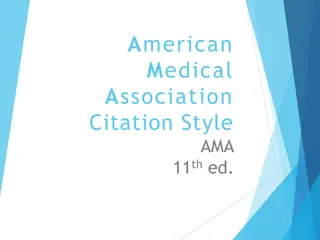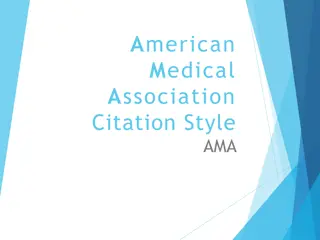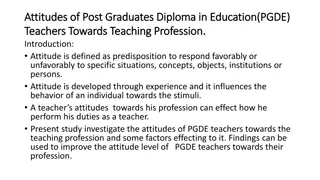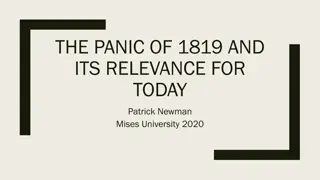CRONYISM: HOW THE AMA CARTELIZED THE MEDICAL PROFESSION
The AMA lobbied for stricter licensing to limit doctors' supply in the Progressive Era, leading to higher medical costs and limited consumer choices. Discover the rise of corporatism in America and its impact on various industries. Uncover how professions trade associations like the AMA controlled skilled labor. Learn about the competition within the medical field in the late 19th century.
Download Presentation

Please find below an Image/Link to download the presentation.
The content on the website is provided AS IS for your information and personal use only. It may not be sold, licensed, or shared on other websites without obtaining consent from the author.If you encounter any issues during the download, it is possible that the publisher has removed the file from their server.
You are allowed to download the files provided on this website for personal or commercial use, subject to the condition that they are used lawfully. All files are the property of their respective owners.
The content on the website is provided AS IS for your information and personal use only. It may not be sold, licensed, or shared on other websites without obtaining consent from the author.
E N D
Presentation Transcript
CRONYISM: HOW THE AMA CARTELIZED THE MEDICAL PROFESSION DR. PATRICK NEWMAN 2023 MISES UNIVERSITY
WHATS THIS PRESENTATION ABOUT, AND WHY SHOULD I CARE? I will concentrate on the efforts of the American Medical Association (AMA) in the Progressive Era (1897 to 1929) to restrict the supply of doctors by lobbying states for stricter licensing requirements tougher accreditation standards The AMA s efforts were examples of cronyism: when the government passes policies to benefit special interests at the expense of the overall public higher prices of medical services and restricted choices of consumers
CRONYISM: RISE OF THE CORPORATIST STATE, 1849-1953 Traces the development of corporatism in America (circa 1897 to 1953) Corporatism: a system where the economy is organized into various governmentally privileged cartels that are monitored by regulatory agencies Railroads Interstate Commerce Commission (1887) Banks Federal Reserve System (1913) Industry Federal Trade Commission (1914) Financial Services Securities Act; Securities and Exchange Act (1933 and 1934) Airlines Civil Aeronautics Act (1938)
CRONYISM: RISE OF THE CORPORATIST STATE, 1849-1953 Corporatism to benefit whom? The special interests of course! Special interests lobby the government to influence legislation/personnel and make sure it benefits them and not rival interests E.g., railroads versus shippers and unions; Wall Street versus Chicago banks; large corporations versus small businesses and unions
CARTELIZING HIGH-SKILLED LABOR Same thing happened with professions trade associations American Pharmaceutical Association licenses to control pharmacists American Bar Association requirements for lawyers in arbitration proceedings National Education Association professional training requirements for K-12 And of course, the American Medical Association
MEDICAL COMPETITION IN THE LATE NINETEENTH CENTURY AMA doctors: traditional allopathic care (use painkilling drugs) (usually cocaine, opium, whiskey, other alcohols, and morphine; aspirin only discovered in 1899) Homeopathic doctors: like cures like care (use diluted symptoms of sickness to strengthen immune system) Eclectics: herbal remedies Different consumers subjectively decided which treatment worked for them (much like today!)
THE AMA TRIES TO DEAL WITH UNRESTRICTED COMPETITION In 1880s AMA lobbies for state licensing boards to restrict supply of doctors Pass an exam and/or earn a diploma from a medical school But homeopaths and eclectics were influential, and AMA only gets either single board systems (with heterodox representation) or systems of separate boards Still intense competition # of physicians per 100,000 in population increased from 171 in 1880 to 173 in 1900 Degree granting medical schools (unregulated) increase from 100 in 1880 to 160 in 1901 New medicines: osteopaths/chiropractors and optometrists
WHAT DOES THE AMA DO? GREATER EFFICIENCY? NO. MORE RESTRICTIONS? YES! Circa 1900, AMA creates a new lobbying front, the Council on Medical Education Advocates single boards with only AMA doctors, more rigorous medical schools (tougher entrance exams, longer academic years, more training, higher tuition fees, etc.), and tougher licensing exams Wanted to force consumers to only purchase higher quality and higher priced doctor services
AMA ELITISM AMA looked down upon lower quality doctors, especially black, female, and Catholic immigrant doctors AMA President Dr. Frank Billings sneered at those colleges that enabled the clerk, the street-car conductor, the janitor, and others employed during the day to earn a degree.
AMA ELITISM One medical school in Tennessee protested against the AMA: True, our entrance requirements are not the same as those of the University of Pennsylvania or Harvard; nor do we pretend to turn out the same sort of finished product. Yet we do prepare worthy, ambitious men who have striven hard with small opportunities and risen above their surroundings to become family doctors to the farmers of the south, and to the smaller towns of the mining districts. . . . Can the wealthy who are in a minority say to the poor majority, you shall not have a doctor?
RESULTS OF AMA LOBBYING 1900 to 1907: thirty states and territories replace multiple boards with single boards (allopath dominated), require doctors to graduate from AMA approved schools # of physicians per 100k decreased 5%, medical colleges decrease 20%
AMA WANTS STRONGER RESTRICTIONS In 1906, the Council visited every remaining medical school in the nation, issued a report that said only half satisfactory Report was too controversial, would look too self-serving Needs a public-interest garb. Council goes to Carnegie Foundation for the Advancement of Teaching to issue its own report
CARNEGIE FOUNDATION Carnegie Foundation agrees, chooses Abraham Flexner to conduct a study Flexner was not knowledgeable about medicine. But he was the brother of Dr. Simon Flexner, an advisor to John D. Rockefeller Junior and a director at the Rockefeller Institute for Medical Research Simon Flexner was also a prot g of Dr. William Welch, an advisor to Rockefeller Jr. and dean of the Johns Hopkins Medical School
MORE ELITISM Rockefeller, the Flexners, and Welch: pro-elite schools, pro research led science. Every medical school needed to be patterned on Johns Hopkins Contrasted with patient led science of Dr. William Osler Abraham Flexner praised government subsidized educational system in Germany Where many AMA doctors earned graduate degrees The poor boy, Flexner opined, had no right to enter medicine unless it is best for society that he should
FLEXNER VISITS THE SCHOOLS In 1909 and 1910 Flexner visits every medical school, very brief visits E.g., within three months he inspected 69 schools in 22 states Flexner duplicating the Council on Medical Education s secret report Carnegie Foundation president at CME meeting: the foundation would be guided very largely by the Council s investigations but would not mention the Council so it would have the weight of an independent report of a disinterested body. we have been hand in glove with you and your committee. . . . When our report comes out, it will be ammunition in your hands. But maintain in the meantime a position which does not intimate an immediate connection between our two efforts.
FLEXNER REPORT (1910) Promoted as a disinterested muckraking piece Flexner: only 31 of the nation s 131 medical schools should remain open This would leave no schools in 22 states! Very successful coverup, AMA connection hidden Results were striking: by mid 1910s, single boards in 43 states, allopath dominated AMA becomes de facto accreditation agency, medical schools decline from 131 in 1910 to 76 in 1929
ELITE INSTITUTIONS BENEFIT While lower ranked medical schools are forced out, Rockefeller Foundation and state governments funnel money to top universities E.g., in 1920, Rockefeller Jr. gives A. Flexner $50 million to gift Johns Hopkins, University of Chicago, and other schools. States match Rockefeller donations to state universities New money leads to research heavy professorships at public s expense Public loses academic s part-time medical services, graduate students deprived of hands-on technical experience Osler: this incentivized clinical prigs . . . whose only human interest was research.
LEADS TO A DOCTOR SHORTAGE # of physicians per 100k in population decrease from 164 in 1910 to 125 in 1929 (24% decrease, 28% decrease since 1900) Hit rural communities disproportionately 1906-1923, # of people per doctors in large cities increased 9%, smaller towns 54%! CME: we had anticipated this [decline] and felt that it was a desirable thing because we had an oversupply of poor mediocre practitioners The real reason: average doctor salary: $1000 in 1900, $6354 in 1929 (535% increase!)
CONCLUSION During the so-called Progressive Era, the AMA lobbied for cartelizing restrictions that reduced competition and raised the prices of their services The AMA behaved like other special-interest groups during this time. They were very successful because of the public-interest argument
